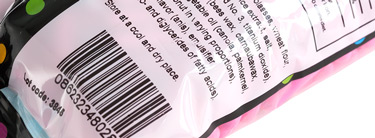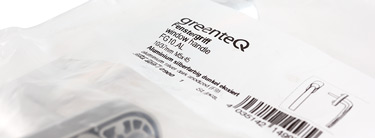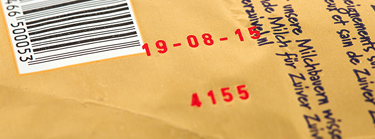Packaging foil
Properties of Properties of (packaging) film
Packaging film is a non-porous material. This means that it has a dense structure making it difficult to absorb any or no liquids. This property leads to it being widely used particularly for food product packaging. The downside of this is that oil-based ink adhesion is difficult, and that solvent-based ink has a relatively long drying time. This makes printers with ink carriers that are based on wax or resin (solids) together the most appropriate techniques to print variable information on film.
Suitable coding techniques for packaging film
To print on packaging film, Thermal Transfer, Hotprint and Hot Solid Inks are often used. Wax/resin is liquefied by heating and melted onto the film. Because the ink quickly cools down and solidifies upon contact, it adheres immediately. This also prevents potential ink migration into the product. Depending on whether the prints are variable or static a choice can be made for either Thermal Transfer (variable) or for Hotprint and Hot Solid Inks (static).



